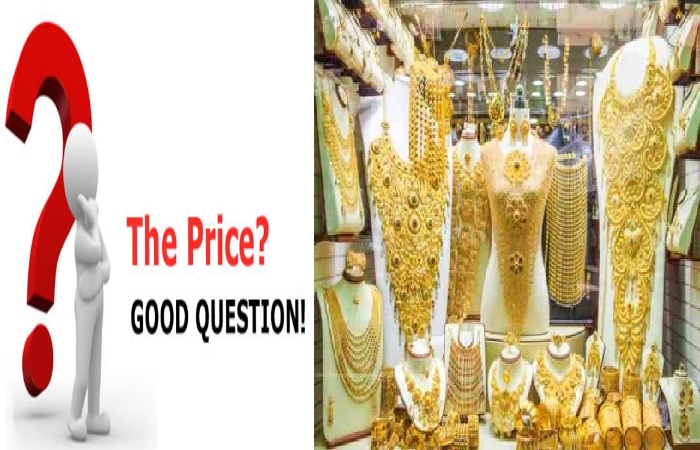Table of Contents
A Price – Definition of Price
A Price is a critical element of the marketing mix. But: What is the value? Let’s take a look at the explanation of price. The price is a crucial element of the marketing mix
The Price
In the narrowest sense, price is the quantity of cash charged for a product or a service. But there must be more than that. Speaking approximately, the price is the sum of all the values that a client gives up to gain the benefits of having or using a product or service. Thus, customers exchange a specific value for having or using the product – a value we call price.
Historically The price has been the central issue affecting buyer choice. Though, in recent decades, non-price factors have gained cumulative importance. Yet, value is still one of the essential elements of the marketing mix. It may regulate very much of a firm’s market share and its profitability.
Research-Backed Pricing Strategies
In that spirit. Let’s examine ten enduring pricing strategies based on the science of consumer behaviour to provide inspiration and insight on how to set your prices effectively.
When Similarity Costs Sales
Limiting choices helps combat “analysis paralysis,” as too numerous options can be discouraging. You might expect, then, that having identical price points for multiple products would be ideal, right? Not always. Affording to research from Yale: if two similar items are the same, consumers are often less likely to buy one than if their prices are even slightly different.
In one experiment, researchers gave users the choice to buy a pack of gum or keep the money. When given a choice between two groups of gum, only 46% purchased when both at 63 cents. Conversely. When the packs of gum—at 62 cents and 64 cents—more than 77% of consumers chose to buy a box. over the first group.
Challenging a Timeless Custom
Ending prices with the number nine is one of the eldest means in the volume, but does it work? According to the periodical Quantitative Marketing and Economics research. The answer is a resounding yes. Prices ending in nine could beat even lower values for the same creation.
The study compared women’s dresses priced at $35 versus. $39 and created that the prices ending in nine outdone the lower prices by a regular of 24%.
Sale prices— “Was $60, today only $45!”—were talented to tire out the amount nine. But when the number nine with a slashed sale price again outperformed lower price points.
For Example, for consumers, the following option
It was $60, now only $45!
It was $60, now only $49!
The sale price ending in nine beats the one ending in five. Even though it was more luxurious. Pricing with nines may be an old pretend, but it’s motionless actual.
Time Expended vs Money Saved
Why would a cheap beer business like Miller Lite select “It’s Miller Time!” for its slogan? Shouldn’t they emphasize their lower prices? Stanford College’s Jennifer Aaker argues that customers recall more positive memories when asked to remember time spent with the product over the money saved in many product categories.
“Because a person’s experience with a creation tends to foster moods of personal connection with it, referring to time typically leads to more favourable attitudes—and more acquisitions,” Aaker says. In a conversation published by the Wharton Business School.
Aaker notes that countless purchases tend to fall in either the “observed” or “material” categories. Purchases like concert tickets benefit extra from “time spent” messaging. While cues of money and prestige aid designer jean sales.
Comparing Prices
Chest-thumping about low values can grant you a one-way permit to low sales when done poorly. According to explore from Stanford. The act of relative pricing can cause unplanned effects if there is no context for why prices should compare.
Asking customers to make precise comparisons about the price of your creation and competitors can cause people to lose trust in your messaging. The lead investigator noted, “The mere fact that we had asked them to make a comparison produced them to anxiety that they were in some way.”

The Power of Situation
Is there ever a period when one Budweiser is valued more than extra? Logic would command no, but bar hoppers know this isn’t the case. Where you buy touches in what way plentiful, you devote. Economist Richard Thaler put this to the exam centuries ago.
He found that regulars were willing to pay higher prices for a Budweiser if they knew it was approaching a fashionable hotel versus a run-down grocery store. Thaler asserts that context was the simple clarification here: the supposed prestige of the exclusive hotel allowed it to get away with accusing progressive values.
Head-clappingly obvious, yet so often forgotten by founders who neglect to position their products. Perception goes a long way toward qualifying whether or not a price is reasonable, so it’s beneficial to create a compelling narrative around a product. This is why people will pay extra for a “multimedia course” over an eBook, even if the evidence presented is the same.
Different Levels of Pricing
Most of us are clueless around the concept of “worth,” says instructor William Pound stone, author of Priceless: The Myth of Fair Value. As such, we can work in ways we wouldn’t believe possible. Pound stone discusses a study around the purchasing patterns of consumers over a selection of bees. There were only two options available in the first test: a regular option and a premium option.
Pricing Strategies and they Important
Pricing strategies are the different approaches that trades take to determine the cost of their goods and services. To choose a suitable pricing strategy, companies consider current product demand, cost of goods sold, consumer behaviour, and market conditions.
Business owners can choose from various pricing strategies conditional on their goals. Some want to maximize profit margins, while others want to gain market share and find new customers in their area. And then other businesses want to get rid of old inventory.
Choosing the right pricing plan can help your commercial do all overhead. It depends on what goals you consume for your small commercial.
Types of Pricing Strategies in a Price
There are many pricing strategies, but not all are best for you. To commence, you must first determine your business goals. Then you can select the valuing method that will help you meet those purposes—whether it’s maximizing profits, obtaining market share, ridding your business of inventory, or a mixture of these.
Pricing strategies can help grow your commercial, earn extra sales, and maximize your profits. Here are some common pricing strategies to reflect.
Penetration pricing of A Price
It’s difficult for a business to arrive at a new marketplace and directly capture market share, but penetration pricing can help. The penetration pricing strategy sets a much lower price than competitors to make early auctions.
These low prices can draw in new regulars and take away income from competitors. While your company will likely lose at first, you can make new customers and turn them into loyal customers once you start raising your prices again. Companies like net and smartphone providers use this strategy to gain market share.
Pro: Market diffusion is much easier than incoming with an average price, and you can quickly earn new customers.
Con: It’s not supportable in the long run and should only be a short-term pricing strategy.
Example: A new cafe releases up in town and suggestions brown that is 40% cheaper than any other cafe in the area.
Skimming Pricing
Businesses that sell high-tech or novelty products use price skimming. Companies that charge maximum prices for new products and slowly decrease costs over time follow a skimming approach. Prices drop as products end their life series and develop less relevant.
Pro: You can maximize profits of new crops and type up for manufacture costs.
Con: Customers may become frustrated that they bought at a higher price and watch as it gradually declines.
Example: A home entertainment store starts selling the latest, most advanced television well above market price. Prices then gradually decrease over the year as newer products come to market.
High-low pricing
Retail businesses that sell seasonal products use a high-low strategy. High-low pricing is similar to skimming, except the price drops at a different rate. With the high-low pricing method, the price of a product drops significantly all at once rather than at a gradual pace.
Pro: You can rid your inventory of out-of-date products by discounting them and putting them on clearance.
Con: Customers may wait for impending sales rather than purchasing at the total price.
Example: A boutique clothing store sells women’s sundresses at a high price during the summer and then puts them on clearance once autumn arrives.
Conclusion
Get smart with your pricing strategy
Great products and services on purpose. They have prices that progress over time and are directed by debate, scrutiny, and, most highly, feedback from paying regulars. That’s for with Help Scout’s pricing.
As with all expressions at abstract research, it’s easy to fall into the low trap of “The Science of Science, Backed by Science.” Instead, view research as an extra business’s case study. A fair jumping-off point for inspiration, but nowhere near the finish line.
Much better. These examples show just how central it is to test out different pricing brackets. especially if you believe you may be undercharging. Some customers are continually going to want the most exclusive option. That doesn’t make a creativity plan right for every product. But it serves as a compelling reminder that you can almost always find an appropriate motive to Charge More.
Also Read: What is a CPU? -Definition, Find, Stored, And More


